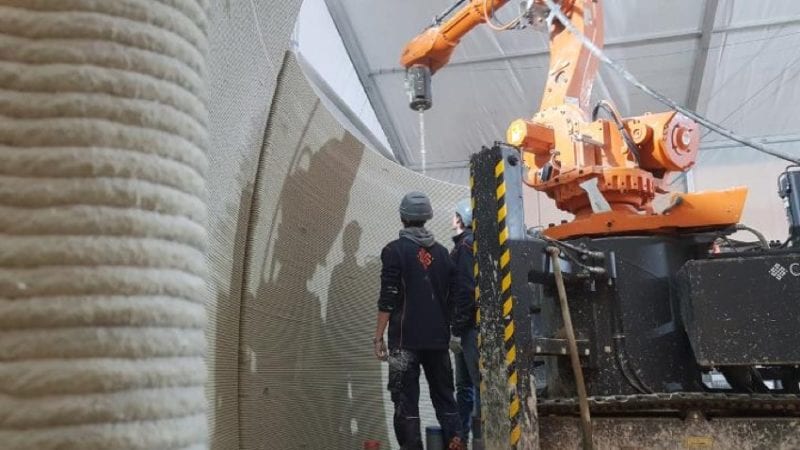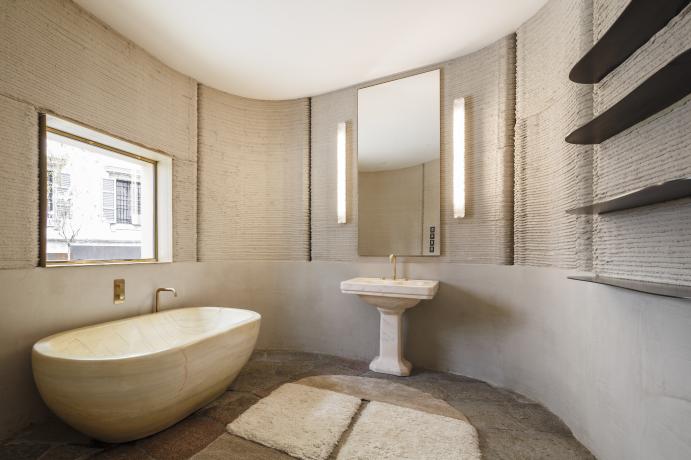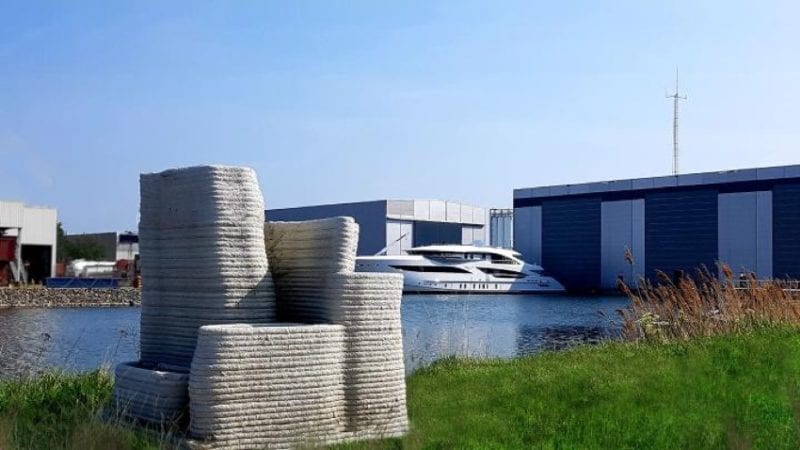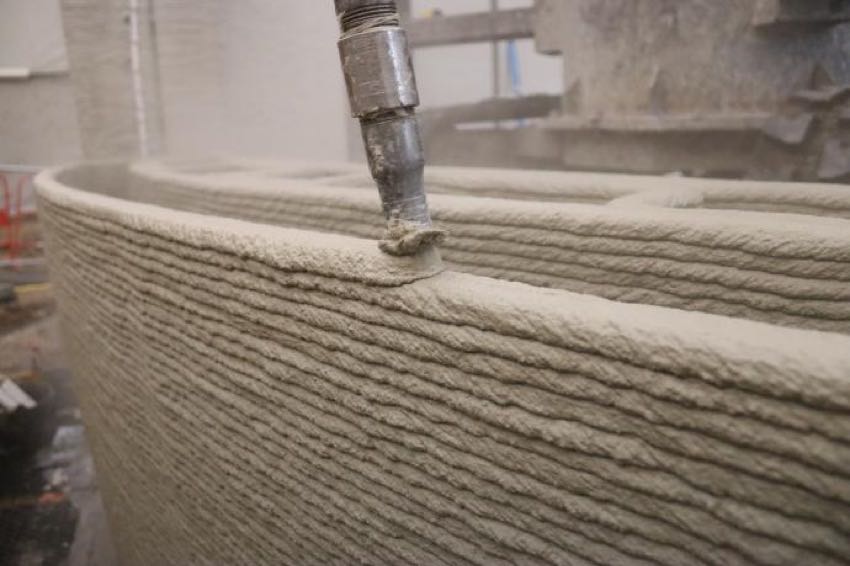3D Concrete Printing Finding Use in Multiple Applications
We seem to be at a point where we’re just starting to see 3D printing on jobsites. While 3D concrete printing in construction may not be the norm, some companies want it to be. Two companies in particular—Korodur out of Amberg in Germany and CyBe Construction from Oss in the Netherlands—have found plenty of use for it across the world.
These innovators have used considerable amounts of 3D concrete printing in residential construction projects. They’ve also developed new innovative applications for this technology that goes beyond printing concrete walls. Contractors and engineers can now use 3D concrete printing for projects like creating outdoor furniture as well as environmental protection projects based on artificial ocean reefs.
Construction Practices
The two companies have been running a joint venture since 2012. That first residential construction project took place in the Middle East. Dubai is known for its challenging desert conditions and greatly benefits from this technology. Since then, they’ve added even more projects to their portfolio, including work in India, Japan, Indonesia, and Saudi Arabia.

The in-field experience of these companies has allowed them to perfect their 3D printing method, which uses a combination of robotics and intelligent mortar. Their processes go through constant refinement, giving valuable insight into how to be more efficient while also exploring new applications.
CyBe’s MORTAR, developed by Korodur, is applied layer by layer by robotic “printers” that can reach speeds of up to ~20 inches per second. Further speeding up construction, this process injects a curing agent that solidifies the concrete very quickly. Manufacturing generates one complete piece with a high load-bearing capacity.

This shortens construction time and saves money. It also opens up architects and engineers to completely new design options that might not be possible through conventional means. Architects and manufacturers using this 3D concrete printing process can repeat buildings and structures to exact specifications. Or, they can tweak them as needed to cater to the individual project requirements.
Contractors can use the 3D printers on the actual construction site or in a workshop for prefabricating individual components.
3D Concrete Printing in Other Applications
Korodur and CyBe pride their 3D printing processes and materials on their sustainability and versatility. For instance, contractors can employ the processes for both bigger construction projects or for smaller jobs. They’ve even used it to create outdoor seating areas, including printing out tables and benches.

Environmental Benefits of 3D Concrete Printing
Perhaps one of the more impressive uses of this technology is the construction of artificial reefs. Contractors can use these 3D concrete printing processes at critical locations to revive marine environments. This assists marine plant and animal life, particularly coral, in developing new habitats.
Korodur and CyBe’s 3D concrete printing also contributes less of a CO2 footprint than conventional cement. The carbon dioxide produced during the manufacturing of the CyBe MORTAR is at least 20% less than that produced by conventional cement. This effort toward responsible manufacturing practices encapsulates the Korudar corporate philosophy, according to Korodur CEO, Nicola Heckmann.
This is an essential part of our corporate philosophy. We consider the careful use of resources and the reduction of emissions to be fundamental to our future viability. For the same reason, we are committed to the development of new technologies and processes. This also includes our 3D concrete printing process, with which we have positioned ourselves not only in Europe but throughout the world as an innovative and reliable partner to the construction industry.
Nikola Heckmann, CEO at Korodur
You can learn more about the CyBe MORTAR by clicking here. The site also includes information regarding procedures and applications for architects, planners, and developers.



